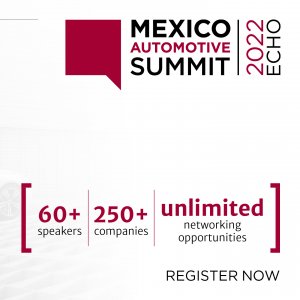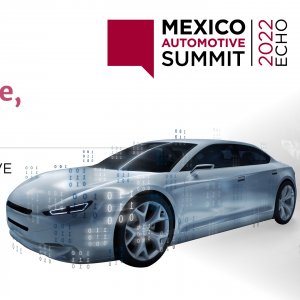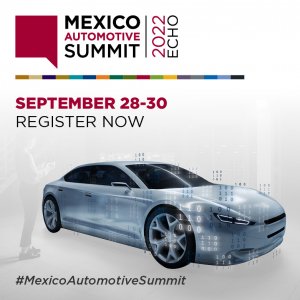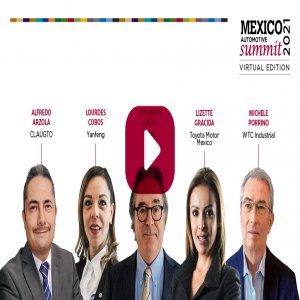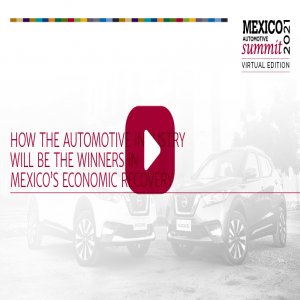
Sales and the Aftermarket: An Ongoing Transformation
Moderator: Amelie Mossberg, Commercial Director of Motors Classifieds for MercadoLibre México
Panelist: Oscar Albin, Executive President of INA
Panelist: Gerardo Varela, General Manager of ZF Services
Panelist: Ricardo Bustamante, CEO and Founder of SICOP
Panelist: Federico de Noriega, Partner at Hogan Lovells BSTL
Some think of technology as a disruptor, others as an opportunity. Panelists at Mexico Automotive Summit 2017 discussed the risks of a booming e-commerce to the automotive aftermarket, and the opportunities this trend offers to those willing to face those risks head on.
“Technology is disrupting the market, which must now adapt to new customers and business models,” said Amelie Mossberg, Commercial Director of Motors Classifieds for MercadoLibre México, during the event held at the Hotel Sheraton Maria Isabel in Mexico City on Thursday. It is hard to argue that technology is changing Mexican lives and the habits of Mexicans themselves. In 2017, there were 77 million internet users in Mexico, Mossberg said. Of those 18.3 million bought something online. E-commerce itself has grown by 685 percent in comparison to 2010 to a total value of US$22 billion. This has a strong impact on all economic areas. “Retail sales at stores have fallen by 70 percent while Amazon grew by 18,000 percent during the past few years,” said Ricardo Bustamante, CEO and Founder of SICOP.
These trends have also impacted the automotive sector. “Three years ago, 3 percent of leads for car sales were online, now 75 percent are online leads,” said Bustamante. Furthermore, “nine out of 10 Mexicans who want to buy a car look for it first online,” added Mossberg. There are many opportunities to continue growing, especially if the sector obtains the support of international regulations. “The online market should move freely. Mexico is a strong supplier and consumer of auto parts from the US. Under existing NAFTA regulations, taxes for parts under US$50 are limited, but the price at which these discounts are available is proposed to rise up to US$700,” said Oscar Albin, Executive President of INA.
“Neither brands nor executives are prepared for this change,” added Bustamante. Gerardo Varela, General Manager of ZF Services agreed, saying that a growing risk of e-commerce is “the disappearance of regular sales channels as brands are now investing in webpages and online marketing.” Retailers who do not generate an online presence risk going bankrupt. “Many companies have disappeared after the introduction of technology. To avoid this, sales intermediaries must develop strategies to offer added value to clients,” said Federico de Noriega, Partner at Hogan Lovells BSTL. But the increase of online retailers brings challenges of its own. “Once the online market is open, local retailers will have to compete with their foreign counterparts in the US and Europe,” said Valera.
Creating an online presence is not easy. “When a brand decides to generate a marketing strategy it has to work alongside the distribution network to avoid competition between them, as an online search might put them against each other. Sometimes, brands will launch a promotion without notifying distributors, who end up rejecting the idea because they were unaware of it,” said Bustamante. It is also necessary for both brands and distributors to integrate information with that from internet search services to permit the generation of a much more complex dataset. The advantage, Bustamante explained, is that digital marketing is much easier to measure than regular marketing. “The brands that are becoming successful are those that have managed to integrate their online strategy in their sales offices.”
There is significant room for opportunity, said Varela. “Globally, US$21 billion of the automotive market is commercialized online and by 2022 this number is expected to reach US$50 billion.” Companies also are facing a challenge that will push them toward digitalization: younger generations.
“For older generations cars were an aspiration, for younger generations cars are a problem. They only want mobility. Furthermore, home office users will have fewer mobility needs, which will translate to less need for fuel, oil and wheels,” said Albin. Younger generations, which now represent 63 percent of the Mexican population, according to Mossberg, have a very different presence than their elders. For instance, they prefer the internet to other media channels, including television, press and radio, making a successful online strategy an unquestionable need. “Younger people want mobility solutions; more than a car, they want a way to move from point A to B. The main challenge for manufacturers is to understand how they think,” said de Noriega.
These trends will only push the automotive market to increasingly move online, the panelists agreed. “About 400 cars are sold online per month in Mexico in 2017. We expect this number to increase by 40 percent in 2018 and we are seeing a growing number of car bookings online,” said Mossberg
